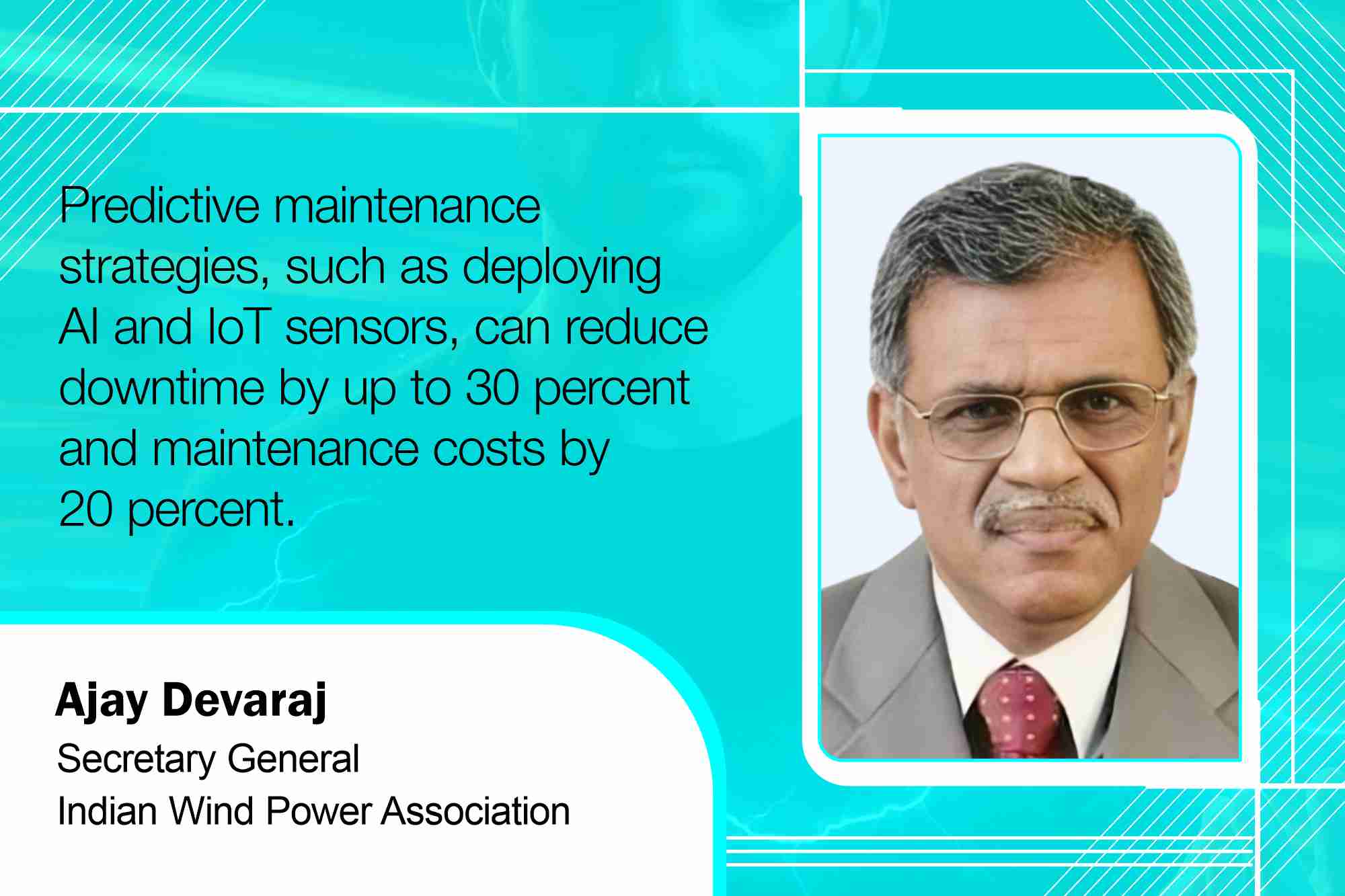Wind and solar together ensure a steady power supply
By Staff Report May 23, 2025 4:13 pm IST
By Staff Report May 23, 2025 4:13 pm IST

Predictive maintenance strategies, such as deploying AI and IoT sensors, can reduce downtime by up to 30 percent and maintenance costs by 20 percent.
The wind energy sector in India is witnessing significant growth, led by states like Karnataka, Tamil Nadu, and Gujarat. Supportive government policies, technological advancements in the sector, and integrated renewable energy strategies are driving the momentum of growth. Ajay Devraj shares his industry experience in talks with EPR. Let us know more from him.
How can India sustain renewable energy growth across states like Karnataka, Tamil Nadu and Gujarat beyond current capacity addition strategies?
Out of the 4.15 GW added in 2024-25, 3.4 GW pertains to just three states –Karnataka, Tamil Nadu and Gujarat. The renewable energy growth in Karnataka can be attributed to the Karnataka Renewable Energy Policy 2022–27, the enhanced financial viability for developers through the KERC approved levelised wind energy tariff of ₹3.34 per unit for projects commissioned between April 2024 and March 2026, and setting in motion the streamlining of land acquisition processes and developing new transmission protocols to address challenges in power evacuation infrastructure.
In Tamil Nadu, the commissioning of projects by companies like JSW Energy has led to capacity addition. Supportive Renewable Energy policies, strengthening of transmission infrastructure to support power evacuation from renewable energy projects, and investments by major players have helped Gujarat. Among other things, the momentum of growth can be sustained by reinforcing Integrated RE policies encompassing wind, solar, storage and hybrids; supportive regulatory frameworks that debottleneck impediments to project implementation; innovative financing and ensuring prompt conversion of PPA to PSAs.
How are technologies evolving to ensure wind turbines’ reliability and safe operation?
The Bureau of Indian Standards has adopted IEC standards for turbine manufacture, and hence, reliability and safety are already of international standards. In operating windmills, drones enable remote inspections of high-risk areas such as elevated structures and rotating equipment, reducing the need for personnel to work at dangerous heights. This not only enhances safety but also minimises operational downtime and maintenance costs.
How do hybrid wind-solar systems with AI and IoT enhance energy reliability, reduce costs and improve grid stability?
The combination of wind and solar energy sources in hybrid systems addresses the intermittent nature of renewable energy. These systems provide a more consistent power supply by leveraging the complementary generation patterns of wind (often stronger at night) and solar (available during the day). This synergy reduces the reliance on fossil fuels and minimises grid fluctuations, contributing to a more stable energy infrastructure.The deployment of AI and IoT sensors allows for continuous turbine performance monitoring. These systems can detect early signs of potential failures, enabling proactive maintenance interventions. Such predictive maintenance strategies reduce downtime by up to 30 percent and maintenance costs by 20 percent. Further, AI models can accurately forecast wind energy production by processing historical weather data and real-time environmental conditions. This capability enables grid operators to balance supply and demand, ensuring grid stability.
How can improved data accuracy from Automated Weather Stations and SCADA enhance forecasting models and strengthen grid resilience in India?
The existing transmission and distribution networks are ageing and often ill-equipped to handle the variability of renewable energy sources like wind. This inadequacy leads to inefficiencies and potential instability in power supply. India’s current storage capacity is insufficient to balance supply and demand effectively. Further, high initial investment costs for wind projects and limited access to affordable financing pose significant barriers. Added to this is policy uncertainty.
Technology can address the challenge of storage. The Indian Wind Power Association (IWPA) is part of a Core Group of experts that is looking at addressing the challenge of input data that feed energy forecasting models. The setting up of Automated Weather Stations within a radius of 25 sq. km of windfarms and the use of SCADA data are among the approaches being examined. This would address the accuracy of weather predictions and strengthen grid resilience.
We use cookies to personalize your experience. By continuing to visit this website you agree to our Terms & Conditions, Privacy Policy and Cookie Policy.